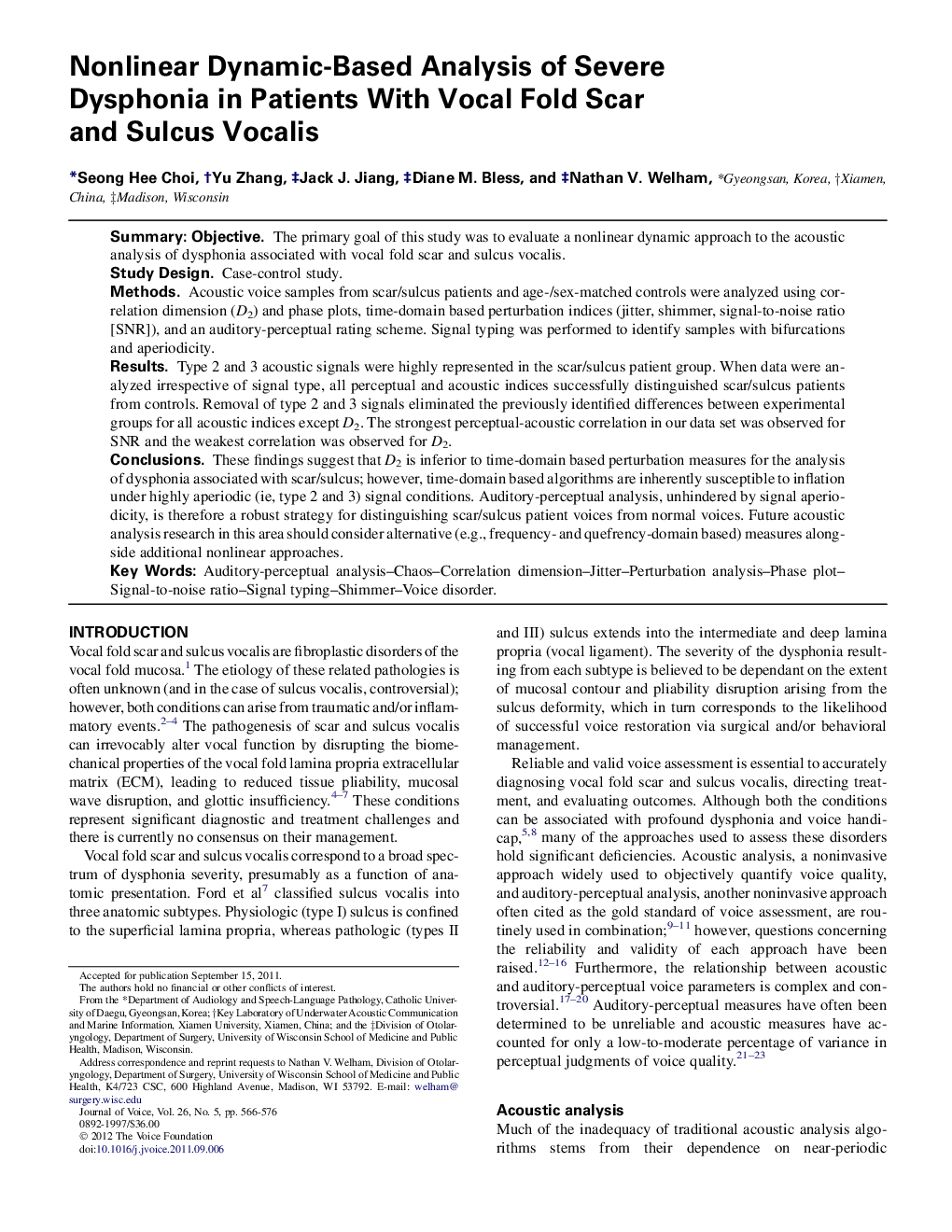| Article ID | Journal | Published Year | Pages | File Type |
|---|---|---|---|---|
| 1101532 | Journal of Voice | 2012 | 11 Pages |
SummaryObjectiveThe primary goal of this study was to evaluate a nonlinear dynamic approach to the acoustic analysis of dysphonia associated with vocal fold scar and sulcus vocalis.Study DesignCase-control study.MethodsAcoustic voice samples from scar/sulcus patients and age-/sex-matched controls were analyzed using correlation dimension (D2) and phase plots, time-domain based perturbation indices (jitter, shimmer, signal-to-noise ratio [SNR]), and an auditory-perceptual rating scheme. Signal typing was performed to identify samples with bifurcations and aperiodicity.ResultsType 2 and 3 acoustic signals were highly represented in the scar/sulcus patient group. When data were analyzed irrespective of signal type, all perceptual and acoustic indices successfully distinguished scar/sulcus patients from controls. Removal of type 2 and 3 signals eliminated the previously identified differences between experimental groups for all acoustic indices except D2. The strongest perceptual-acoustic correlation in our data set was observed for SNR and the weakest correlation was observed for D2.ConclusionsThese findings suggest that D2 is inferior to time-domain based perturbation measures for the analysis of dysphonia associated with scar/sulcus; however, time-domain based algorithms are inherently susceptible to inflation under highly aperiodic (ie, type 2 and 3) signal conditions. Auditory-perceptual analysis, unhindered by signal aperiodicity, is therefore a robust strategy for distinguishing scar/sulcus patient voices from normal voices. Future acoustic analysis research in this area should consider alternative (e.g., frequency- and quefrency-domain based) measures alongside additional nonlinear approaches.
